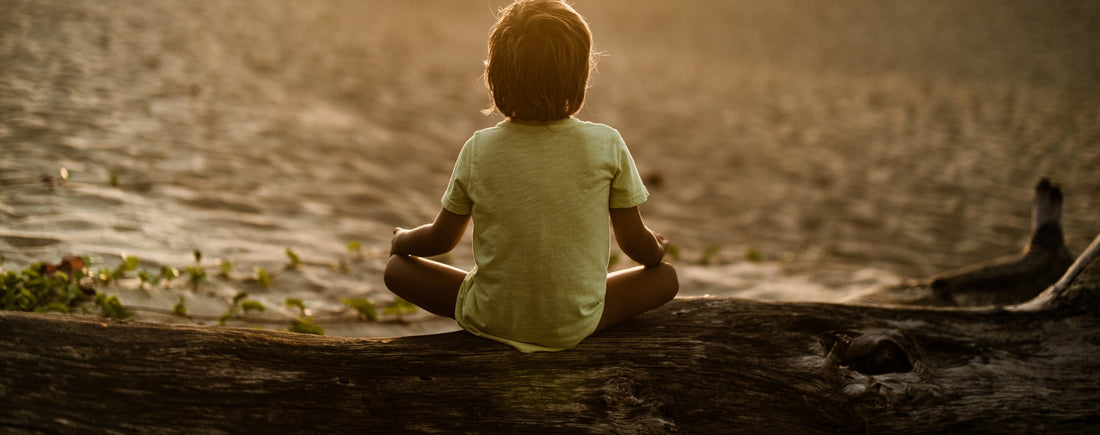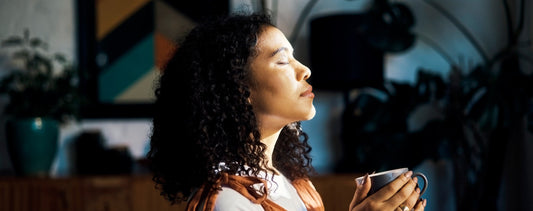Whether you're a parent, teacher, aunt, grandfather, babysitter or otherwise spend time with kids of any age, try out these three practices to introduce kids to meditation and mindfulness.
Meditation, yoga, and other mindfulness practices are more popular, and helpful, than ever. Studies have shown that teaching kids mindfulness practices can build students’ attentiveness, respect for fellow classmates, self control, and empathy, all while reducing stress, hyperactive behavior, ADHD symptoms, and depression.
Yet only 1.6 percent of U.S. children meditate, according to the National Center for Complementary and Integrative Health.
Giving kids the tools to help them fend off negative thoughts and behaviors, build self-confidence, focus, and treat others and themselves with respect and appreciation is a gift they will have for the rest of their lives.
U.S. Rep. Tim Ryan instituted the Skills for Life program in Ohio schools to teach deep breathing, meditation, and other problem-solving skills to elementary-aged kids. What they found was that these practices helped kids balance their emotions, cut down on bullying, and increased awareness, and both students and teachers are excited about the program.
Another study done in the San Francisco Unified School District with more than 3,000 students found dramatic improvement in overall academic performance, including a spike in math test scores for students who practiced mindfulness meditation and “quiet time.” In one rough middle school, where gunfire, fighting, and suspension rates were the highest in San Francisco, when “quiet time” was integrated into curriculum, suspension rates dropped by 45 percent, attendance rose, and grades improved significantly.
Whether you’re a parent, teacher, aunt, grandfather, babysitter or otherwise spend time with kids of any age, try out these three practices to introduce kids to meditation and mindfulness.
If the child you’re teaching is younger, you can add a little more detail and fun to the exercise to keep them engaged. Young kids, especially under the age of 6, love the extra movement when they’re learning to bring awareness to their breath. Encourage them to stand up in a relaxed way and follow these steps:
This one will likely elicit giggles and awareness of their breath.
If they are the leader, you can tell them to picture themselves as the breath. If they are the follower, you can ask them to picture themselves as the mind. For this example, I’ll pretend that they’ve chosen their big brother as their best bud, and the big brother is the leader.
Say something like, “So you and your big brother do everything together. Let’s pretend that your breath and your mind are best friends, too. And that you are just like the mind—the follower, and your big brother is just like the breath—the leader.” Then follow the steps below to guide them through the meditation.
When you’re finished guiding your child through the relaxation technique, make sure they spend at least a few minutes in quiet, encouraging them to keep their breathing slow and steady.
Download the Chopra Meditation & Well-Being App now for more powerful tools that will help your children find peace and calm in any situation—a skill that will benefit them into adulthood.
Meditation, yoga, and other mindfulness practices are more popular, and helpful, than ever. Studies have shown that teaching kids mindfulness practices can build students’ attentiveness, respect for fellow classmates, self control, and empathy, all while reducing stress, hyperactive behavior, ADHD symptoms, and depression.
Yet only 1.6 percent of U.S. children meditate, according to the National Center for Complementary and Integrative Health.
Giving kids the tools to help them fend off negative thoughts and behaviors, build self-confidence, focus, and treat others and themselves with respect and appreciation is a gift they will have for the rest of their lives.
U.S. Rep. Tim Ryan instituted the Skills for Life program in Ohio schools to teach deep breathing, meditation, and other problem-solving skills to elementary-aged kids. What they found was that these practices helped kids balance their emotions, cut down on bullying, and increased awareness, and both students and teachers are excited about the program.
Another study done in the San Francisco Unified School District with more than 3,000 students found dramatic improvement in overall academic performance, including a spike in math test scores for students who practiced mindfulness meditation and “quiet time.” In one rough middle school, where gunfire, fighting, and suspension rates were the highest in San Francisco, when “quiet time” was integrated into curriculum, suspension rates dropped by 45 percent, attendance rose, and grades improved significantly.
Whether you’re a parent, teacher, aunt, grandfather, babysitter or otherwise spend time with kids of any age, try out these three practices to introduce kids to meditation and mindfulness.
1. The Balloon
This guided meditation brings a visual component to a very simple deep breathing exercise. You can do this standing or seated.- Relax your body and begin to take deep inhales and slow exhales through the nose.
- Start to take a slow, deep breath to fill your belly up with air, as if you’re trying to blow up a big balloon. Expand your belly as much as you can.
- Slowly let the air out of the balloon (through the nose) as you release the breath from the belly.
- Encourage your kids to feel their entire body relax each time they exhale, each time air is slowly being released from the balloon. You can even make a “hissing” noise to encourage them to slow down the exhale even more, “Like letting air out of the balloon.”
- Continue for several minutes.
If the child you’re teaching is younger, you can add a little more detail and fun to the exercise to keep them engaged. Young kids, especially under the age of 6, love the extra movement when they’re learning to bring awareness to their breath. Encourage them to stand up in a relaxed way and follow these steps:
- Ask them to think of their favorite color and picture a giant balloon of that color in their mind.
- Then have them take a slow, deep inhale through the nose, filling up their tummies with air as if trying to blow up a giant [their favorite color] balloon. As an option, you can also have them stretch their arms open and overhead to represent expansion and the big balloon.
- When their balloon is totally full, have them hold their breath at the top, and then you can “pop the balloon” for them (gesture finger to belly) and they can fall down as they exhale.
This one will likely elicit giggles and awareness of their breath.
2. Follow the Leader
This meditation works best for kids who are at least 5 years old. Ask your child to picture their best friend or a sibling—someone they do everything with or someone they look up to. Then ask them which one (your child or their best friend) usually leads. Usually one friend is the one who decides things—the one who is more of the leader; the other one is the friend who usually follows the leader. Ask them which they are.If they are the leader, you can tell them to picture themselves as the breath. If they are the follower, you can ask them to picture themselves as the mind. For this example, I’ll pretend that they’ve chosen their big brother as their best bud, and the big brother is the leader.
Say something like, “So you and your big brother do everything together. Let’s pretend that your breath and your mind are best friends, too. And that you are just like the mind—the follower, and your big brother is just like the breath—the leader.” Then follow the steps below to guide them through the meditation.
- Sit down comfortably and close your eyes.
- Bring all of your attention to your breath and slow it down, taking deep inhales and slow exhales.
- Let’s have the mind follow the breath—no matter what. Picture yourself as your mind, the one that’s following your big brother, your breath. Try to focus your mind on the breath and follow as the breath inhales and exhales.
- Count your breaths at the end of every exhale. Don’t let your mind count before the end of the exhale. The mind always wants to jump ahead, but don’t let it. Allow it to remain focused on being the follower.
- Count to 10 slowly, always at the end of each exhale, continuing to let the mind follow the breath.
3. Guided Relaxation
This practice is great for kids (and adults) of all ages, whether they’re having trouble sleeping, stressed out, sick and in bed, or acting out. It’s based on the progressive muscle relaxation technique that Dr. Edmund Jacobson developed in the 1920’s. It’s used to help alleviate tension when people are in a situation that makes it difficult for them to relax. Guide your kids with these steps:- Sit down or lie down comfortably and close your eyes. You can use pillows or blankets to make yourself as comfortable as you can be.
- Take a few deep, cleansing breaths as you begin to relax.
- Bring all of your attention to your right foot, noticing how it feels. Squeeze the right foot, making a fist with your entire right foot and all five toes; tense and squeeze it tightly. Hold this tension for two deep breaths.
- Then release all tension in the right foot suddenly. Relax it completely and notice the tension release. You may feel a tingling sensation in the foot.
- Take a deep breath, and then move on…
- Move your attention to your left foot. Same instructions as for the right foot.
- Move slowly up and around the body, squeezing one body part at a time to create tension, immediately followed by the contrasting sensation of release and ease. Follow each part with a deep, cleansing breath. Here’s a sample progression you can follow:
- Right foot, left foot
- Right ankle and calf, left ankle and calf
- Right knee, left knee
- Right thigh, left thigh
- All feet and legs
- Hips
- Butt
- Belly
- Entire lower body, from tummy down
- Chest and heart
- Right arm, left arm
- Right hand, left hand
- Shoulders
- Neck
- Face
- Whole body at once (do this one twice)
When you’re finished guiding your child through the relaxation technique, make sure they spend at least a few minutes in quiet, encouraging them to keep their breathing slow and steady.
Download the Chopra Meditation & Well-Being App now for more powerful tools that will help your children find peace and calm in any situation—a skill that will benefit them into adulthood.






















